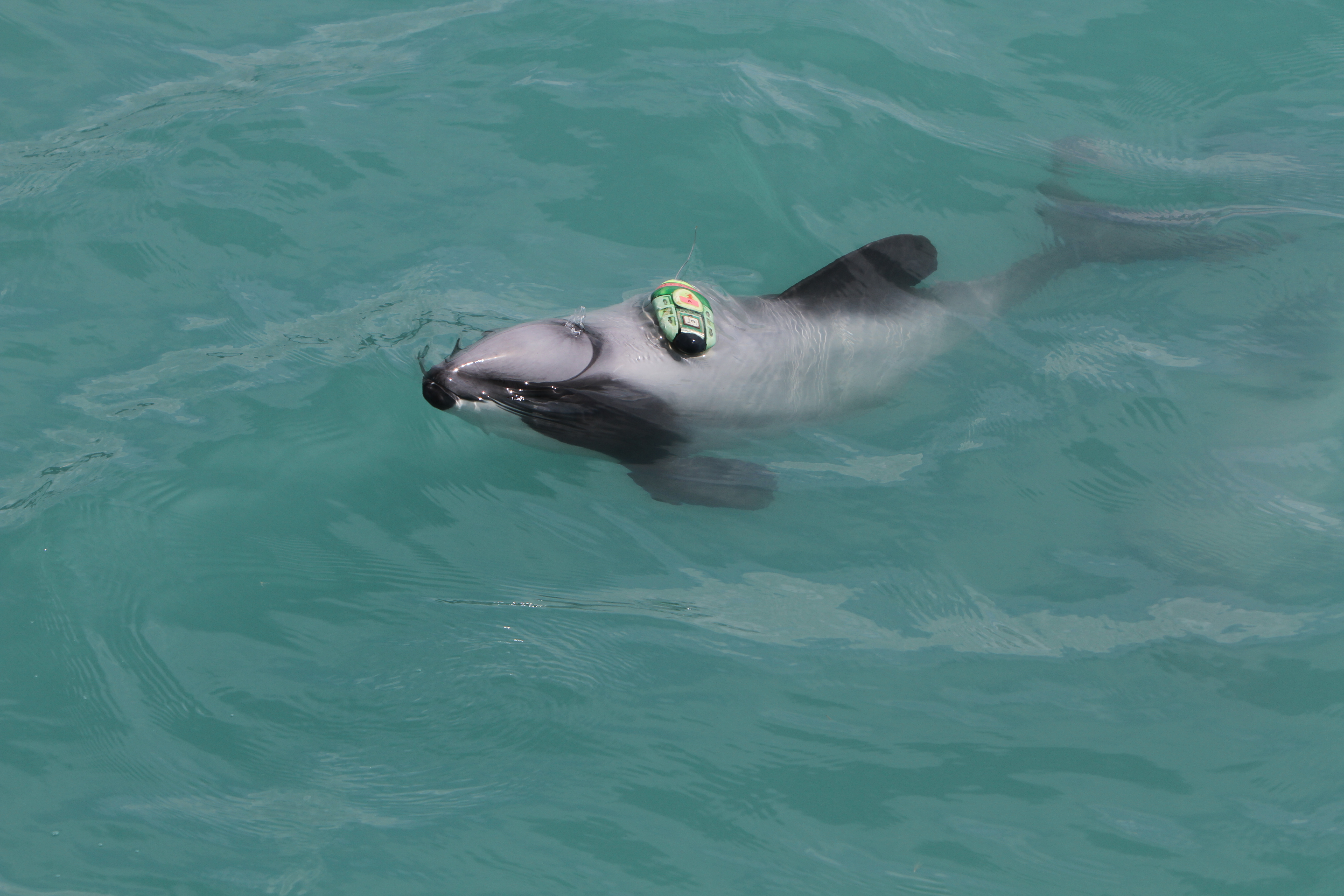Trial of new monitoring technology sheds light on the hidden lives of Hector’s dolphins
04 July 2024
Research led by Nelson’s Cawthron Institute has shed new light on the underwater lives of Hector’s dolphins, including the animals’ feeding and diving behaviours which experts have not previously recorded.
The study trialled the use of DTAGs (digital acoustic recording tags) fitted with suction cups and temporarily attached to Hector’s dolphins in Marlborough’s Te Koko-o-Kupe/Cloudy Bay.
Cawthron Institute marine ecologist Dr Deanna Clement, who co-led the collaborative study working alongside experts from the Aarhus University (Denmark), University of Auckland and the Department of Conservation, says DTAG monitoring shows great promise.
“We’ve traditionally been limited in how much we can learn about marine mammals by watching them from the surface – this new technology opens up a whole new world of information about how these precious animals live their lives underwater,” Dr Clement says.
“One exciting thing we learned from sensors in the tags, is when the dolphins are hunting for food they often search upside down, a behaviour never previously recorded for Hector’s dolphins.”
“We suspect it assists with how they use echolocation clicks to scan near the seabed for food.”
Clement says the objective of the study was to identify new monitoring techniques to help government agencies to monitor and protect these dolphins that are listed as Nationally Vulnerable in the New Zealand Threat Classification System.
“These dolphins are small, and we were looking for a temporary tracking technology to provide us with finer detail about their everyday behaviours.
“Our goal with these tags is to gather detailed data to understand not just where they go, but also what they do all day for example, how they feed themselves, rest, and play
The DTAGs were developed by Dr Mark Johnson (formerly of Denmark’s Aarhus University) and the devices are attached to the dolphin using four small suction cups. Researchers on a boat wait for the dolphins to bow ride with the boat and use a pole to attach the tag to the animal quickly and painlessly as possible.
“The suction cups keep the tag attached to the dolphin until it falls off naturally or detaches itself at a programmed time (a maximum of 24 hrs for this study) and then we head out in the boat to retrieve it.”
Clement says part of the purpose of the study was to assess the impact this tagging method might have on these dolphins.
“Their wellbeing is our top priority, so we only attempted to tag dolphins that approached the boat which is a sign they are comfortable and open to the interaction.
“We monitored the tagged individuals to ensure there was no evidence the tagging process was too stressful, traumatic or harmful to the dolphins, and there wasn’t – some swam off after being tagged, but within minutes they were back alongside the boat again.”
“I’m really confident this is going to be a valuable tool for us to learn more about the dolphins, with future opportunities to use them in other places around Aotearoa and compare the data – the behaviours we observe in one sub-population of Hector’s dolphins could be quite different to sub-populations in other areas based on geographical differences alone, helping inform the ongoing management of the species, so there’s heaps more to be done.”
This research is funded by Fisheries New Zealand, and the report was reviewed by the Fisheries New Zealand Aquatic Environment Working Group. It will help inform whether and how DTAGs might be used as a monitoring tool for government funded research.
To find out more, the report can be read here: AEBR 327 Novel technologies to monitor Māui and Hector’s dolphins: DTAG feasibility trial (fish.govt.nz)

Image: A Hector’s dolphin fitted with a temporary suction cup tag as part of the Fisheries NZ funded study.

Image: DOC staffer Mike Ogle rides on the bow as he attempts to deploy a suction cup tag onto a bow riding dolphin.
